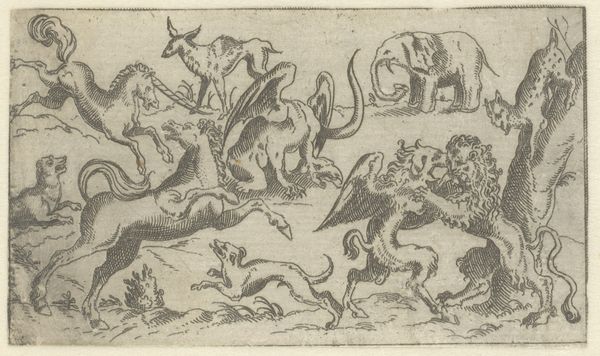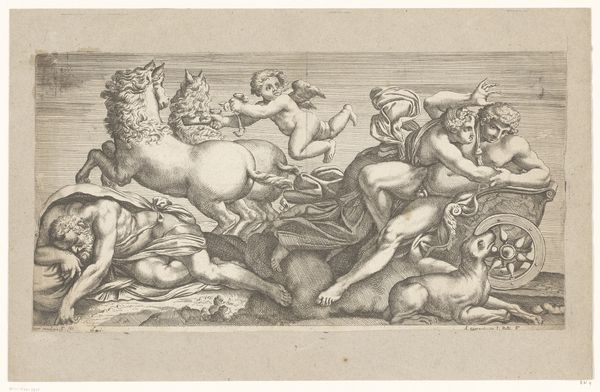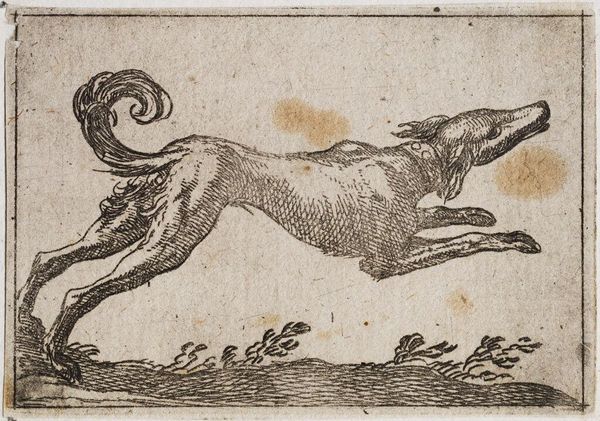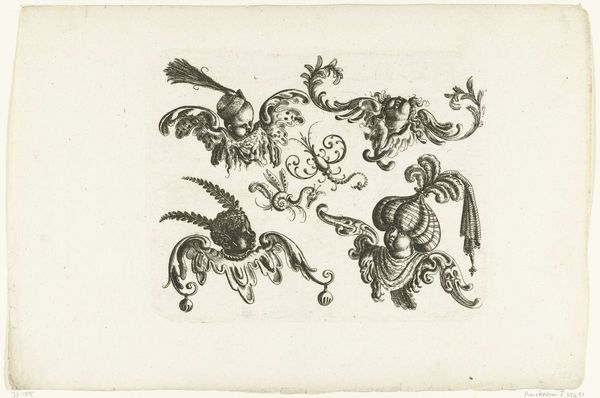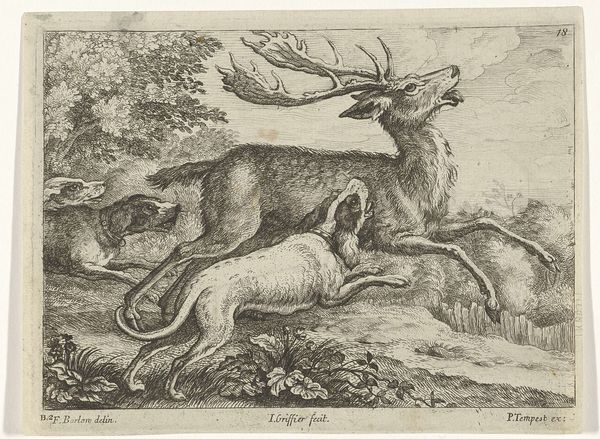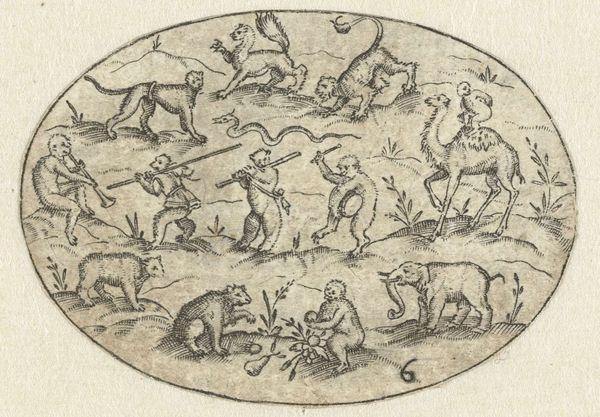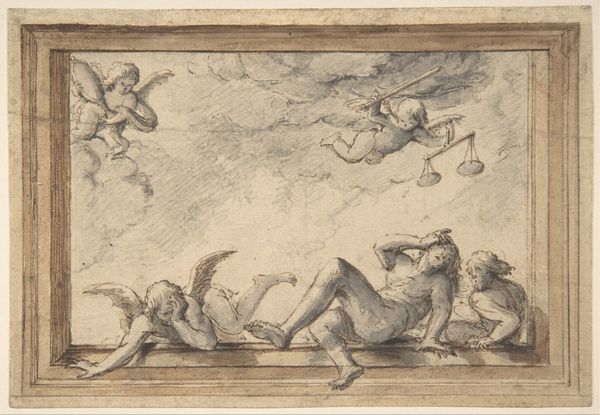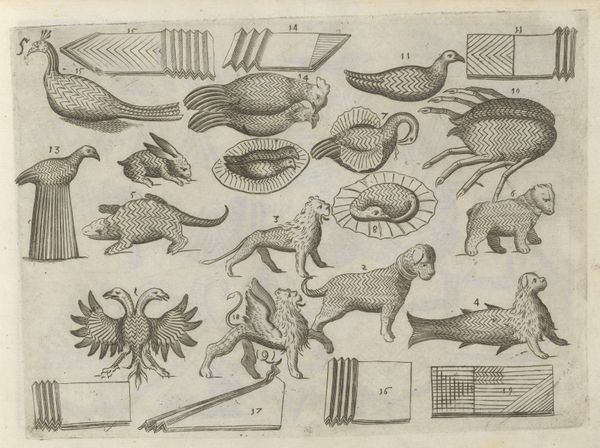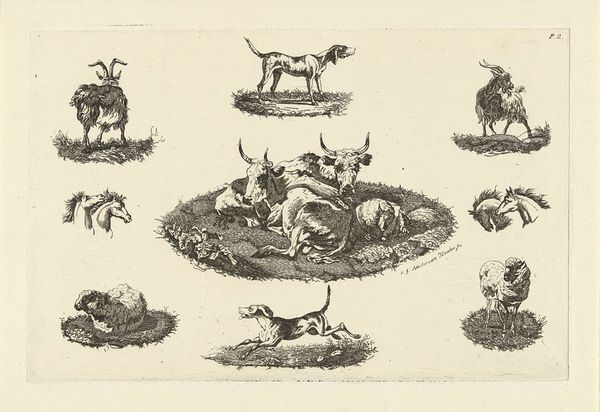
drawing, paper, pencil
#
drawing
#
toned paper
#
light pencil work
#
quirky sketch
#
animal
#
pencil sketch
#
dog
#
figuration
#
paper
#
personal sketchbook
#
pen-ink sketch
#
pencil
#
sketchbook drawing
#
pencil work
#
northern-renaissance
#
sketchbook art
#
fantasy sketch
Dimensions: height 156 mm, width 209 mm
Copyright: Rijks Museum: Open Domain
Curator: This drawing presents a study sheet with various animal sketches, aptly titled "Studieblad met tekenvoorbeelden: diverse dieren". It's crafted with pencil on paper by Michael Snijders, sometime between 1610 and 1672. The toned paper lends an interesting quality, don't you think? Editor: It does. What immediately strikes me is how light and lively it feels despite the somewhat academic intention. There's a wonderful dynamism in the composition, the animals are all in motion. Curator: Absolutely. Notice how Snijders renders each creature—there's a leaping tiger, a bounding deer, even foxes, dogs and rabbits—each frozen mid-action, as if sprung from the collective unconscious of fable and the hunt. The image reverberates with symbolism related to instinct, nature, and perhaps even freedom. Editor: Indeed, although I'm more drawn to the way the composition directs your eye. The large deer in the center serves as an anchor, while the other animals radiate outwards in a carefully arranged chaos. There’s a semiotic tension between order and wildness here; look at the strategic placement of that coiled snake beneath the dog, for example. Curator: Good point! Serpents often symbolized primordial chaos or temptation in that period, while dogs represented fidelity. Placing them in such close proximity creates an undercurrent of conflict, reflecting a deeper psychological struggle. Perhaps the struggle between the baser instincts (as embodied by the serpent) with domestication. Editor: I can certainly see that, although from a purely formal standpoint, the sinuous curve of the snake echoes the lines of the running dog and creates visual harmony and balance. Curator: True enough! That balance prevents it from descending into total pandemonium, offering the viewer a safe remove from the wildness depicted. What I appreciate most about Snijders' approach here is how these archetypes from folklore mingle so effortlessly, conjuring ancestral memories within us. Editor: And I, conversely, value Snijders' keen eye for capturing the raw essence of movement. It showcases the artist’s process of close observation and understanding of form. Curator: An exercise, then, in understanding ourselves through nature's varied guises. Editor: Yes, an illuminating study, literally and figuratively.
Comments
No comments
Be the first to comment and join the conversation on the ultimate creative platform.
